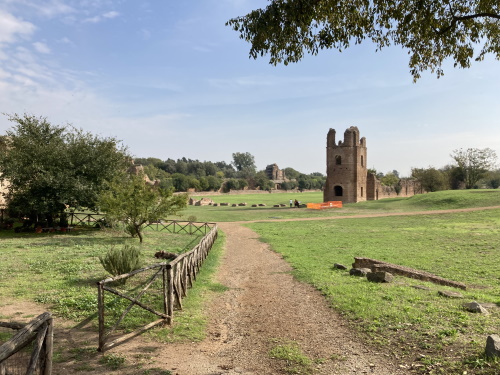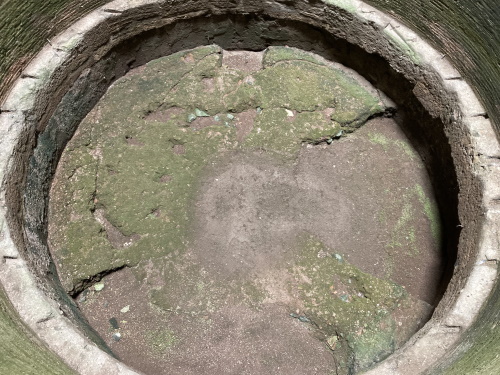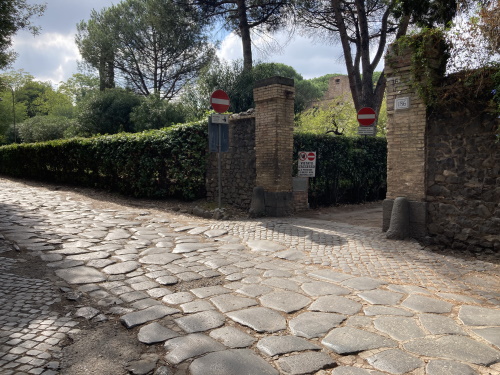Blog TWHS Visits
Via Appia
My trip mates were surprised to hear that Rome only has one WHS (two if you count the Vatican as well). So many great monuments that could be WHS on their own! However, if all goes to Italy’s plan, the city will have another one in 2024: the Via Appia. This “revolution in road construction” will be a serial nomination of 22 stretches between Rome and Brindisi. It will be interesting to see whether there is a core zone overlap with the Rome WHS, as the Via Appia traditionally started at the Forum Romanum. The road with the name ‘Via Appia Antica’ now starts from the edge of the city at Porta San Sebastiano, a gate passing through the Aurelian Walls.
During my 2022 trip to Rome, I visited just a short section of the Via Appia. It’s not easy to do so on foot, as the road is narrow without room for a pavement and there is constant vehicle traffic. The sights also are spread out miles apart. You’ll encounter many cyclists (often in guided groups and not well-trained in cycling), who seem to have chosen the best way to explore this linear site.
Fortunately, bus #118 travels part of the ancient road, and we took it from the Baths of Caracalla. After 4km, we disembarked near a field that turned out to be the Circus of Maxentius. It has the remains of a chariot racetrack and a mausoleum. This area in Antiquity was a well-to-do suburb. Also, many prominent families buried their dead next to the road and so did the Vatican from the 2nd to 4th centuries (the popes were interred in Catacombs).
The most monumental mausoleum in this first stretch is the Tomb of Caecilia Metella. It was built in the 1st century BC for the daughter of a consul. The white building has the shape of a rotunda and the walls are made of travertine. At the top, there is a narrow strip with sculpted ornaments such as oxen heads. They are hard to see with the naked eye as the tomb is 21m high.
The monument looks like a castle because it was used as one in the Middle Ages after defensive constructions were added. There’s a small collection of sculpted funerary stones to see that stood facing the road. It costs 8 EUR to visit, a bit steep for this mausoleum alone as the tomb is empty nowadays (the ticket does allow entrance to a further 4 paid sites in the Appia Antica Archeological Park as well, but they don't sound too exciting either).
Somehow you do expect more from something as legendary as the Via Appia, although there is way more to see here than at the Roman Limes elsewhere in Europe. Most of the road itself on this stretch has modern paving.
When it gets inscribed, I’ll gladly check out one or more locations further south. A full list of which 22 stretches, with many more monuments, will be included is not available yet. We know that they’re spread across the regions of Lazio, Campania, Basilicata and Puglia. The video in which the nomination was announced shows a map at minute 7 which is this one. Major landmarks are Capua, Benevento, and Brindisi, but also intermediate sections within small municipalities such as Ariccia, will be covered.
Els - 30 October 2022
Comments
Esteban Cervantes Jiménez 3 November 2022
One of my favorite TLS, altogether.
Astraftis 3 November 2022
I second Simone with regard to the Villa dei Quintili (from which by the way one can continue to the great park of the aqueducts).
For me one of the most charming features of the Roman part of the via Appia is that the paving, as uneven as it is now, has stayed more or less the same in many segments, so one can imagine to truly being walking at the time of the Romans. An incredible feeling. Let's see what the other components will be, but I think they are more of a corollary.
Simone 31 October 2022
It's a shame that you missed to visit Villa dei Quintili and Tombe della Via Latina that are stunning places! If you visit the Parco Archeologico dell'Appia Antica website you'll get all the informations.


